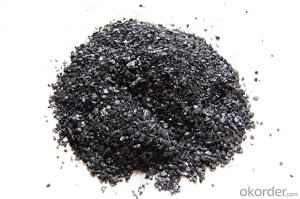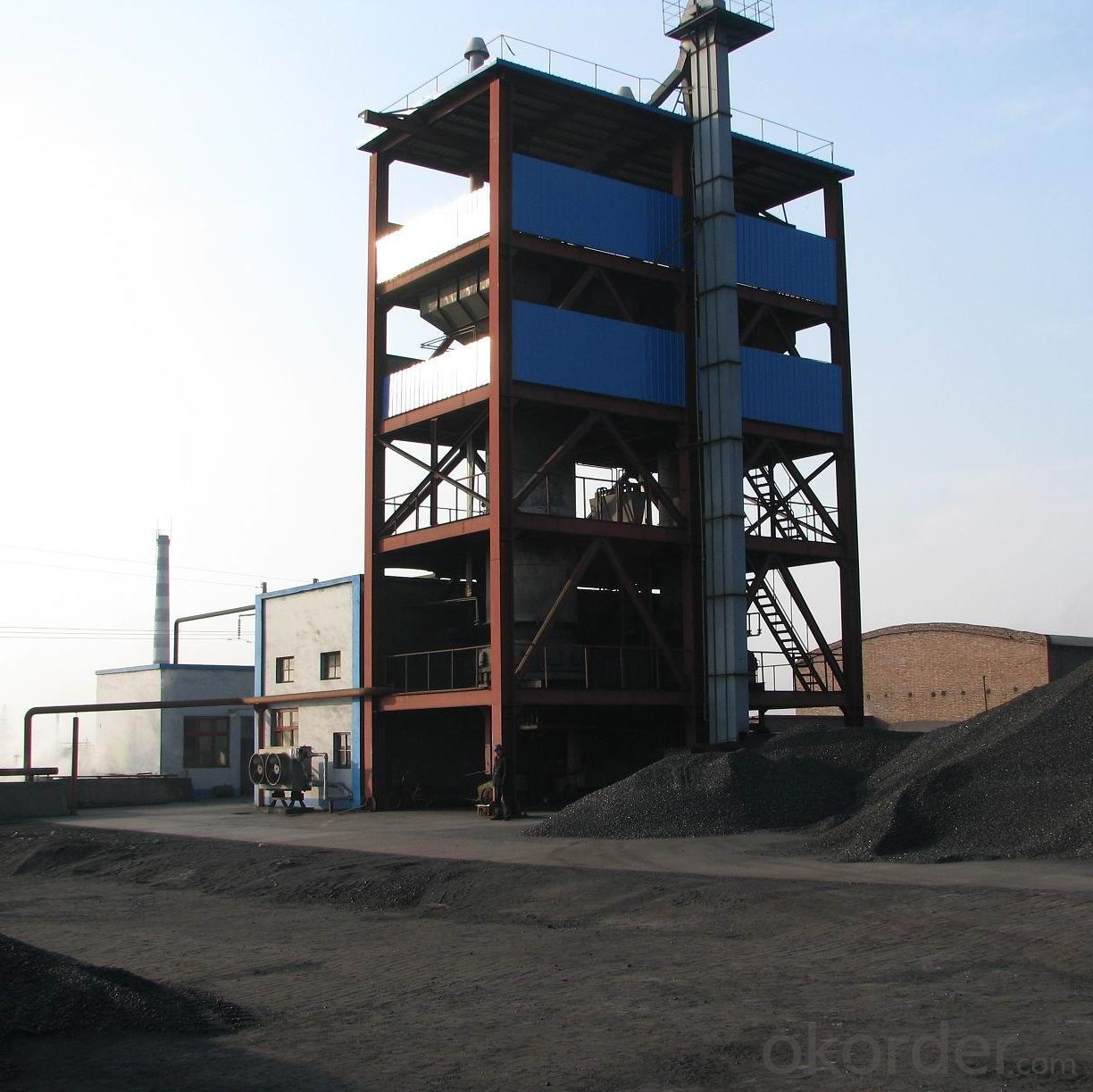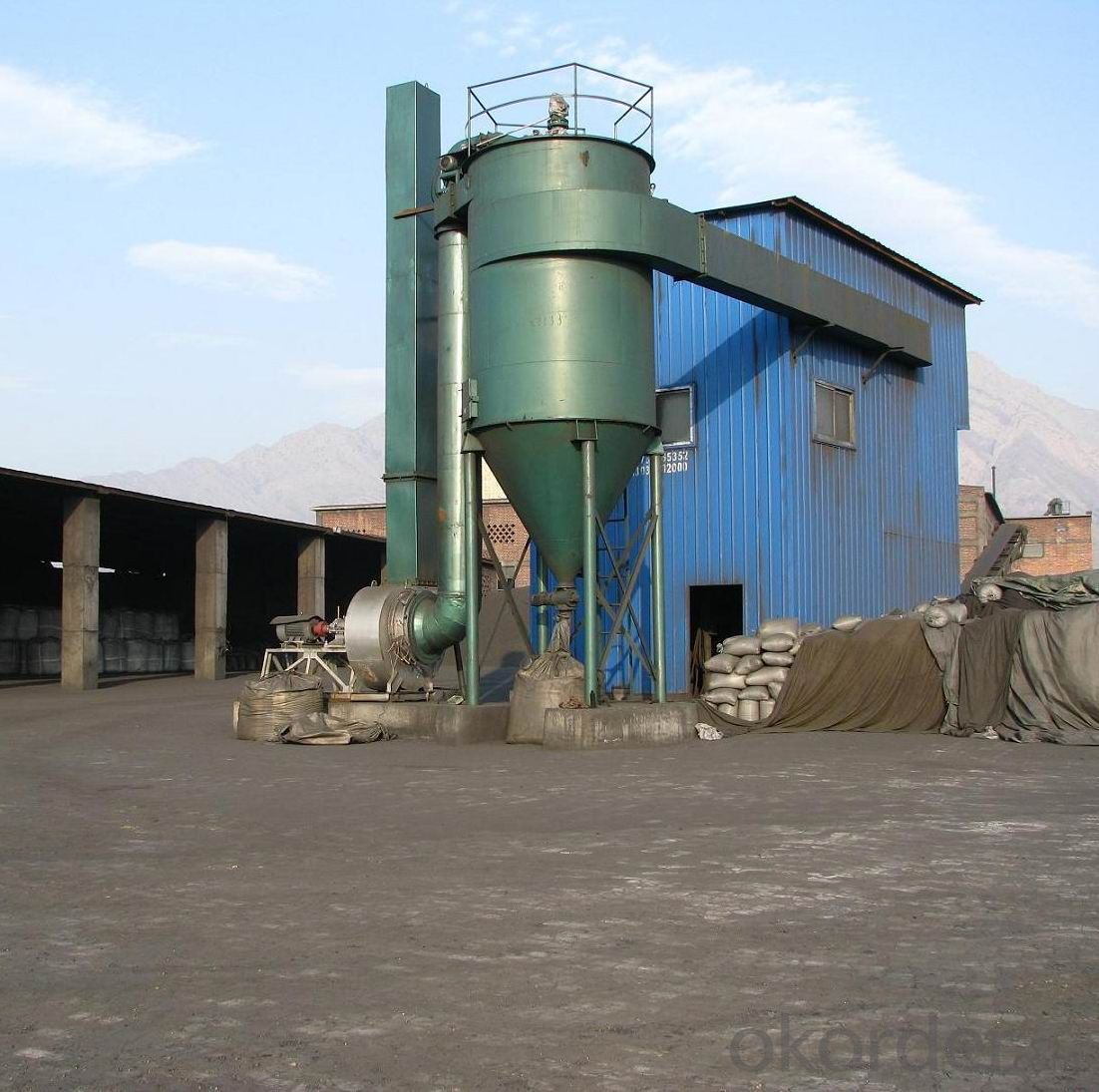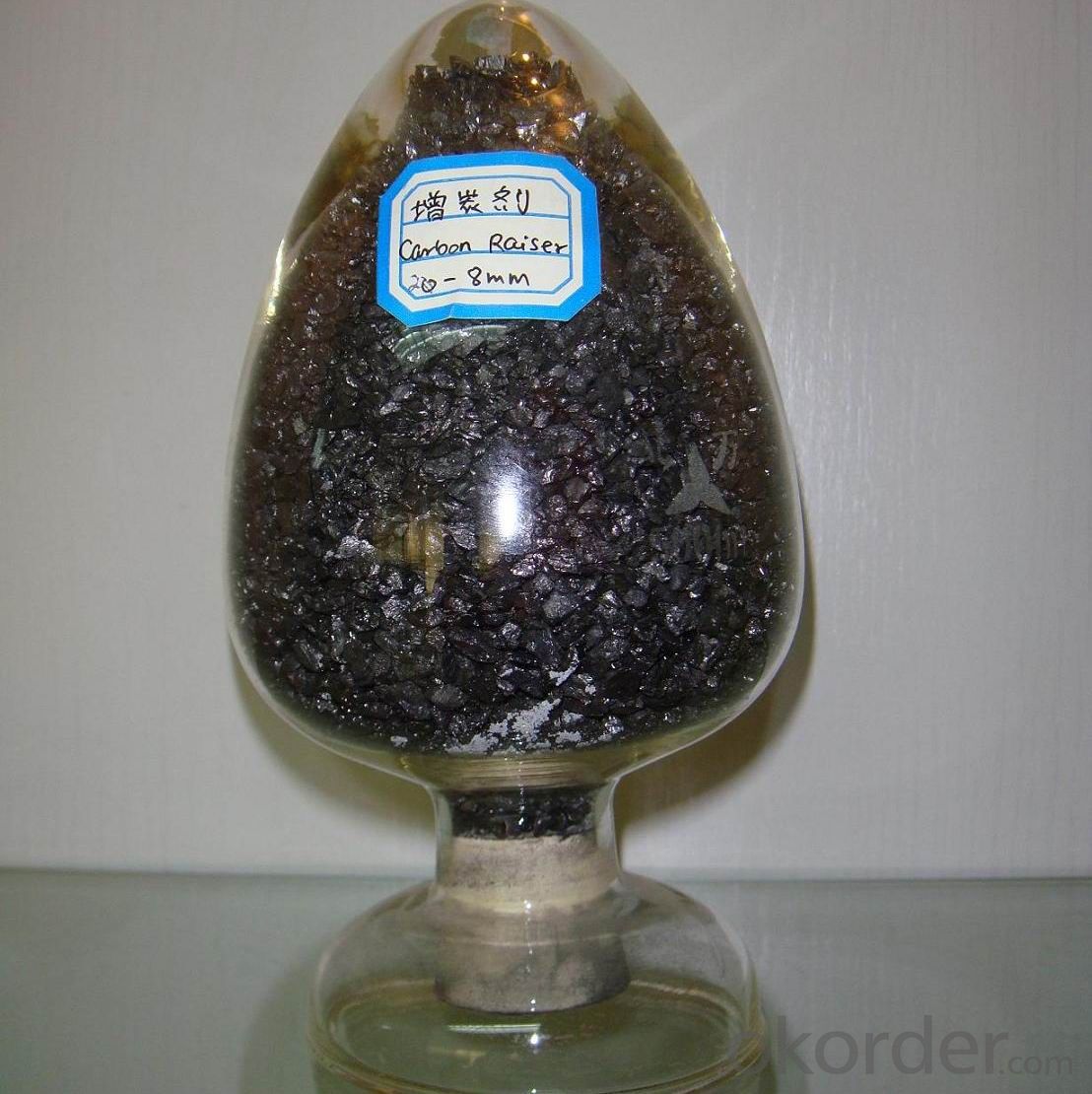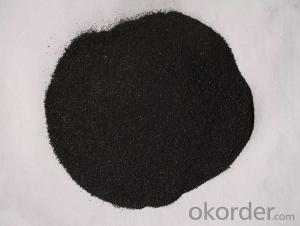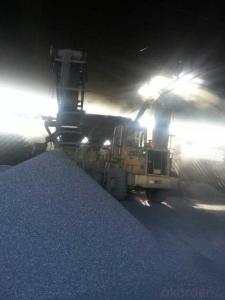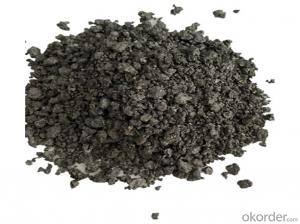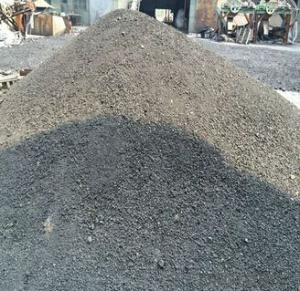Carbon Raiser Caclined Anthracite Coal CA
- Loading Port:
- Tianjin
- Payment Terms:
- TT or LC
- Min Order Qty:
- 20 m.t.
- Supply Capability:
- 10000 m.t./month
OKorder Service Pledge
OKorder Financial Service
You Might Also Like
Quick Details
Place of Origin: Ningxia, China (Mainland)
Application: steel making
Shape: granule
Dimensions: FC90-95%
Product Type: Carbon Additive
C Content (%): 90-95% MIN
Working Temperature: -
S Content (%): 0.5%MAX
N Content (%): -
H Content (%): 0.6%MAX
Ash Content (%): 8.5%MAX
Volatile: 2%MAX
ADVANTAGE: low ash & sulfur
COLOR: Black
RAW MATERIAL: TaiXi anthracite
Packaging & Delivery
| Packaging Details: | In 1MT plastic woven bag. |
|---|---|
| Delivery Detail: | 30-40DAYS |
Specifications
Carbon Raiser Caclined Anthracite Coal CA
Carbon Additve low Ash,S,P
FC>95% ASH<4% S<0.3%
It is made from TaiXi anthracite.
instead of pertrol coke reduce the cost
Structure
Carbon Raiser Caclined Anthracite Coal CA
Shape: granule
Dimensions: FC90-95%
Product Type: Carbon Additive
C Content (%): 90-95% MIN
Working Temperature: -
S Content (%): 0.5%MAX
N Content (%): -
H Content (%): 0.6%MAX
Ash Content (%): 8.5%MAX
Volatile: 2%MAX
ADVANTAGE: low ash & sulfur
COLOR: Black
RAW MATERIAL: TaiXi anthracite
Feature
Carbon Raiser Caclined Anthracite Coal CA
Specifications (%): | ||||||
Grade | F.C | Ash | V.M | Moisture | S | Size |
CR-95 | ≥95 | <4 | <1 | <1 | <0.3 | 0-30mm |
CR-94 | ≥94 | <4 | <1 | <1 | <0.3 | |
CR-93 | ≥93 | <6 | <1 | <1 | <0.4 | |
CR-92 | ≥92 | <7 | <1 | <1 | <0.4 | |
CR-91 | ≥91 | <8 | <1 | <1 | <0.4 | |
CR-90 | ≥90 | <8.5 | <1.5 | <2 | <0.4 | |
Image
Carbon Raiser Caclined Anthracite Coal CA
FAQ:
Carbon Raiser Caclined Anthracite Coal CA
Why we adopt carbon additive?
Carbon Additives used as additive in steel making process. It made from well-selected Tai Xi anthracite which is low in content of ash, sulphur, phosphorus, high heat productivity, high chemically activation.
Mainly industry property of it is: instead of traditional pertroleum coal of Carbon Additives, reduce the cost of steelmaking.
Advantage:
Carbon Raiser Caclined Anthracite Coal CA
1.High quality and competitive price.
2.Timely delivery.
3.If any item you like. Please contact us.
Your sincere inquiries are typically answered within 24 hours.
- Q: How is carbon used in the production of pharmaceuticals?
- Carbon is used in the production of pharmaceuticals through various processes such as carbonization, activation, and purification. It serves as a crucial component in the synthesis of drugs and plays a significant role in drug formulation, purification, and separation processes. Additionally, carbon-based materials are utilized as drug carriers and adsorbents to enhance drug delivery and optimize the efficiency of pharmaceutical manufacturing.
- Q: What are the advantages of carbon-based nanoelectronics?
- Carbon-based nanoelectronics offer several advantages over traditional silicon-based electronics. Firstly, carbon-based materials, such as nanotubes and graphene, have exceptional electrical properties. They can carry high electron mobility, meaning they can transport charges at a much higher speed than silicon. This allows for faster and more efficient electronic devices. Secondly, carbon-based nanoelectronics have excellent thermal properties. They can efficiently dissipate heat, reducing the risk of overheating in electronic devices. This is particularly beneficial for high-power applications, where heat management is crucial. Additionally, carbon-based nanoelectronics are extremely thin and flexible. Nanotubes and graphene can be easily manipulated to create ultra-thin and flexible electronic components. This enables the development of wearable electronics, flexible displays, and other innovative devices that were previously not possible with silicon-based technology. Carbon-based materials also have a higher mechanical strength compared to silicon. They are more resistant to bending or breaking, making them more durable and long-lasting. Furthermore, carbon-based nanoelectronics have the potential for scalability. They can be fabricated using various methods, including chemical vapor deposition and solution-based processes, which offer the possibility of large-scale production at lower costs. Lastly, carbon-based nanoelectronics are environmentally friendly. Carbon is an abundant element and does not pose the same environmental concerns as silicon, which requires energy-intensive processes for extraction and purification. Overall, carbon-based nanoelectronics offer improved electrical and thermal properties, flexibility, scalability, durability, and environmental sustainability. These advantages make them highly promising for the development of next-generation electronic devices.
- Q: Why vegetarianism can reduce carbon emissions?
- That is to say, when the level of the food chain is more, the carbon emissions are more natural; while the human eating vegetarian diet is the shortest food chain, which has the least carbon emissions
- Q: How are carbon nanotubes used in various applications?
- Carbon nanotubes are incredibly versatile and have found numerous applications across various fields. In electronics, carbon nanotubes are used as an alternative to traditional silicon-based materials, enabling the development of smaller, faster, and more efficient devices. They can be used as the building blocks for transistors, interconnects, and memory devices. In the field of energy, carbon nanotubes are being explored for their potential in improving the performance of batteries and supercapacitors. Their high electrical conductivity and large surface area make them ideal for enhancing energy storage and facilitating faster charge and discharge rates. Carbon nanotubes also have applications in the field of materials science. They can be incorporated into composites to enhance their strength, stiffness, and electrical conductivity. These composites find use in aerospace, automotive, and construction industries, where lightweight and durable materials are sought after. Additionally, carbon nanotubes are being investigated for their potential in the field of medicine. Due to their unique properties, they can be utilized for drug delivery systems, sensors, and imaging technologies. They have the ability to selectively target cancer cells, enabling more efficient and targeted treatment options. In summary, carbon nanotubes have an extensive range of applications, including electronics, energy storage, materials science, and medicine. Their remarkable properties make them highly desirable for enhancing performance and enabling advancements in various industries.
- Q: How does carbon cycle through the environment?
- The carbon cycle is the process by which carbon moves between the atmosphere, land, oceans, and living organisms in a continuous cycle. It is crucial for maintaining a stable climate and supporting life on Earth. The cycle begins with carbon dioxide (CO2) in the atmosphere, which is absorbed by plants during photosynthesis. Through this process, plants convert CO2 into organic carbon compounds, such as sugars and carbohydrates, which they use for growth and energy. This carbon is then passed along the food chain as animals consume plants or other animals. When plants and animals die or excrete waste, their organic matter decomposes, releasing carbon back into the environment. This decomposition process is carried out by microorganisms, such as bacteria and fungi, which break down the organic matter and release carbon dioxide as a byproduct. Some carbon may be stored in the soil for long periods, depending on factors like temperature and moisture. This stored carbon in the soil can be released back into the atmosphere through processes like microbial respiration or erosion. Another way carbon returns to the atmosphere is through the burning of fossil fuels such as coal, oil, and natural gas. When these fuels are burned for energy, they release carbon dioxide into the atmosphere, contributing to the greenhouse effect and climate change. The oceans also play a crucial role in the carbon cycle. They absorb a significant amount of carbon dioxide from the atmosphere through a process called carbon sequestration. Marine plants, such as phytoplankton, also photosynthesize and store carbon in their tissues. When these organisms die, they sink to the ocean floor, where the carbon can be stored for long periods in the form of sediment or dissolved in the water. Oceanic circulation and biological processes also redistribute carbon throughout the oceans, with surface water exchanging carbon with the atmosphere. Additionally, the oceans act as a carbon sink, as they can store vast amounts of carbon dioxide, helping to regulate its levels in the atmosphere. Overall, the carbon cycle is a complex and interconnected process that involves various natural and human activities. Understanding and managing this cycle is crucial for mitigating climate change and maintaining the health of our environment.
- Q: How does carbon impact the stability of ecosystems?
- Carbon impacts the stability of ecosystems in several ways. Firstly, carbon is a fundamental element that forms the basis of all organic compounds, including carbohydrates, proteins, and lipids, which are essential for the growth and survival of all living organisms. Carbon is cycled through various processes like photosynthesis and respiration, maintaining the energy flow within ecosystems. However, excessive carbon emissions, mainly through the burning of fossil fuels, contribute to the greenhouse effect and climate change. Rising carbon dioxide levels in the atmosphere lead to global warming, altering temperature and precipitation patterns. These changes can disrupt ecosystems, affecting the distribution and abundance of species, as well as their interactions. Additionally, carbon is a vital component of soil organic matter, which enhances soil fertility, water-holding capacity, and nutrient availability. Deforestation and land degradation, often driven by human activities, release large amounts of carbon into the atmosphere and reduce the carbon storage capacity of ecosystems. This can lead to decreased soil productivity, loss of biodiversity, and increased vulnerability to erosion and drought. Therefore, managing carbon emissions, promoting sustainable land use practices, and preserving natural habitats are crucial for maintaining the stability and resilience of ecosystems.
- Q: How does carbon affect the formation of blizzards?
- Carbon does not directly affect the formation of blizzards. Blizzards are primarily caused by the collision of warm and cold air masses, resulting in heavy snowfall and strong winds. However, carbon emissions and climate change can influence weather patterns, potentially leading to more intense or frequent blizzards in certain regions due to alterations in atmospheric conditions.
- Q: How does carbon dioxide affect the Earth's atmosphere?
- Carbon dioxide affects the Earth's atmosphere by trapping heat from the sun, leading to the greenhouse effect and causing global warming and climate change.
- Q: How to test aldehyde group and carbon carbon double bond in acrolein
- Can be oxidized into carboxyl aldehyde with silver ammonia solution or new copper hydroxide,
- Q: What are the different colors of carbon-based gemstones?
- The different colors of carbon-based gemstones include white, yellow, brown, black, and the rare blue and pink diamonds.
Send your message to us
Carbon Raiser Caclined Anthracite Coal CA
- Loading Port:
- Tianjin
- Payment Terms:
- TT or LC
- Min Order Qty:
- 20 m.t.
- Supply Capability:
- 10000 m.t./month
OKorder Service Pledge
OKorder Financial Service
Similar products
Hot products
Hot Searches
Related keywords
